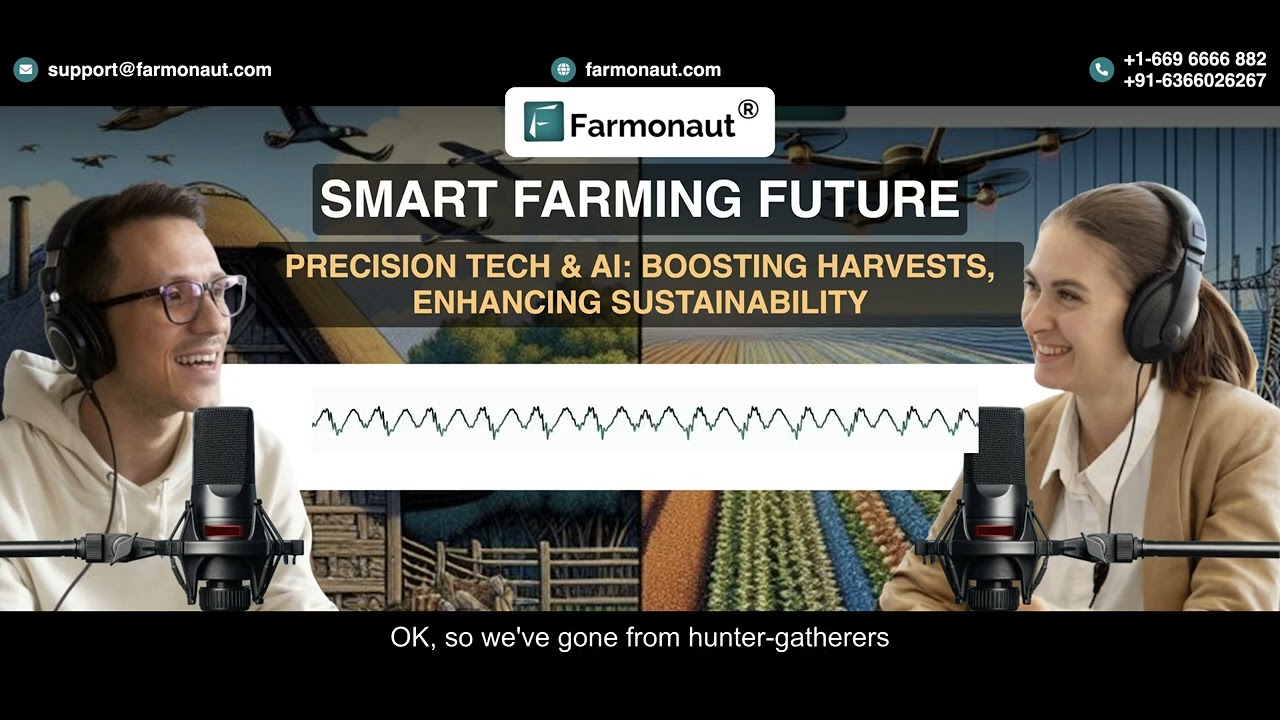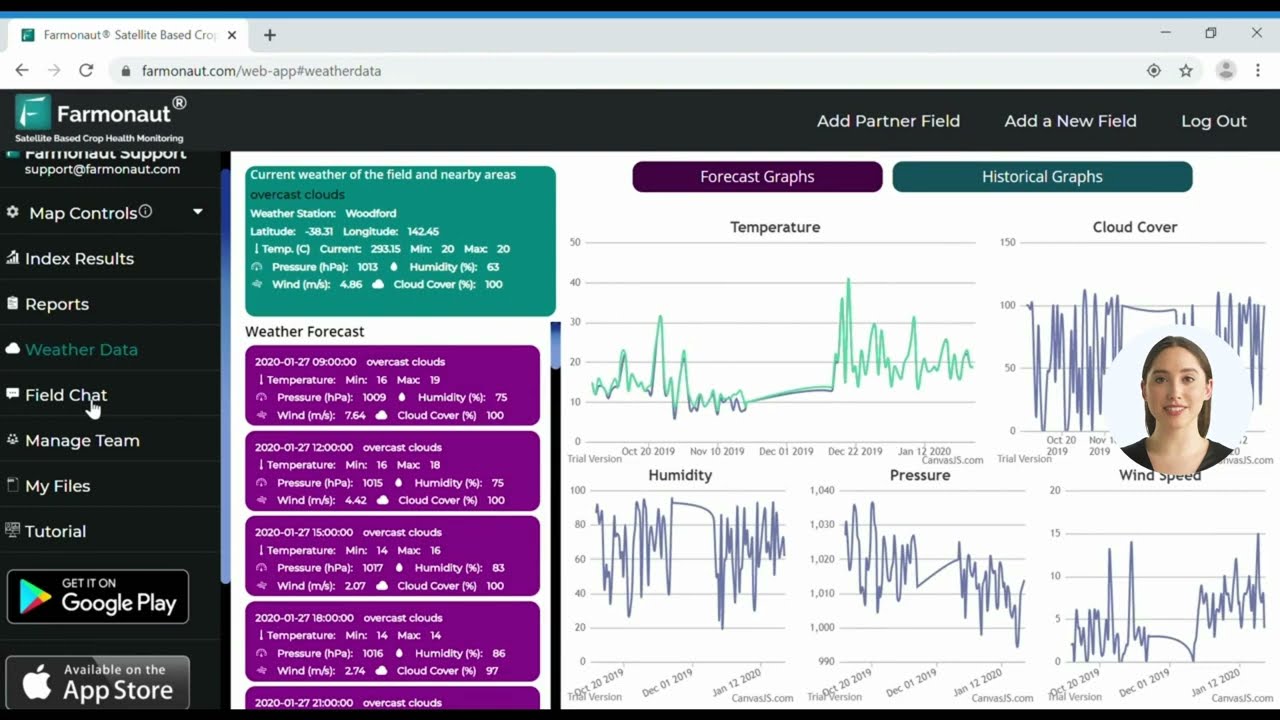Table of Contents
- Introduction: Rosemary Farming and Its Growing Significance
- Market Growth & Sustainability Trivia
- Rosemary Tree Cultivation & Best Agricultural Practices (2025 & Beyond)
- Economic and Market Potential of Rosemary at Farmers Markets
- Sustainability and Environmental Benefits of Rosemary Farming
- Major Challenges and Future Prospects for Rosemary Farmers
- Trends Comparison Table: 7 Rosemary Farmers Market Trends 2026
- Technology, AI, and Satellite Solutions for Rosemary Farming
- Farmonaut Subscriptions & Resources
- FAQ: Rosemary Tree & Farmers Market Trends
- Conclusion: The Future Significance of Rosemary at Farmers Markets
Rosemary Tree: 7 Rosemary Farmers Market Trends 2026
Focus Keyword: rosemary tree, rosemary farmers market
Summary: In recent years, the rosemary tree (Rosmarinus officinalis) has emerged as an important crop within the agricultural sector, particularly valued for its culinary, medicinal, and aromatic properties. By 2025 and heading into 2026, rosemary farming is seeing renewed importance as a profitable niche crop for farmers, as well as a sustainable agricultural practice with tremendous market potential, ecological benefits, and future prospects at farmers markets.
This article explores the cultivation, market potential, and future prospects of rosemary farming, focusing on its role in modern agriculture and the farmers markets that drive such transitions in sustainability and consumer health.

Key Rosemary Market Trivia for 2025 – 2026
“By 2026, sustainable rosemary farming at farmers markets is projected to grow by 23%.”
“Over 60% of rosemary farmers aim to adopt eco-friendly cultivation practices by 2025.”
Rosemary Tree Cultivation & Best Agricultural Practices (2025 & Beyond)
Native to the Mediterranean region, the rosemary tree is a hardy, drought-tolerant herb that has effortlessly adapted to various climates worldwide. Its robustness and adaptability make it an ideal candidate for diverse farming environments. With demand increasing across culinary, medicinal, and aromatic products, rosemary farming is now a principal focus for farmers seeking sustainable crop production.
As a perennial shrub (Rosmarinus officinalis), rosemary offers multiple years of yield with proper care. Here’s an overview of agronomic practices optimizing yield and sustainability for the years 2025 and beyond:
Soil & Environment Requirements
- Well-drained, slightly alkaline soils (pH 6.0 – 7.5) are critical. Soil testing, such as through satellite monitoring available via Farmonaut’s large-scale farm management platform, helps farmers track soil health and plan amendments.
- Rosemary thrives in open fields with ample sunlight but is also well-suited to controlled greenhouse environments—enabling year-round production.
Propagation & Planting
- Though seed propagation is possible, cuttings are the predominant method for uniformity and faster maturity, ensuring higher quality and more predictable yields.
- Planting typically occurs during the early spring or fall, with plant spacing (60 cm–90 cm apart) to support airflow, reduce disease, and ensure optimal growth.
Watering & Nutrient Management
- Minimal irrigation is required once established, greatly reducing water use compared to other crops. Drip irrigation systems ensure consistency without waste.
- Organic compost or well-decomposed manure enriches the soil while avoiding intense chemical inputs—aligning rosemary farming with organic principles popular within sustainable agriculture today.
Lifecycle, Harvest, and Maintenance
- With the right practices, biomass is ready for the first harvest after six to eight months. Subsequent harvests occur up to twice per year if plants are properly maintained.
- Rosemary plants can remain productive for several years, extending cycles and supporting a profitable operating model.
Farmonaut’s Contribution to Smart Rosemary Cultivation
For farmers seeking data-driven cultivation, we at Farmonaut provide real-time satellite monitoring and AI-based advisory systems. This ensures optimal timing for irrigation, fertilizer application, and pest control, which is essential in maintaining the quality and sustainability of rosemary crops. Farmonaut’s fleet management tools also allow for efficient operations on large-scale rosemary farms.
Economic and Market Potential of Rosemary at Farmers Markets
As of 2026, the market potential for rosemary in farmers markets is at an all-time high. With consumers increasingly seeking natural and organic products that benefit both health and the environment, rosemary’s appeal spans:
- Fresh herb sales for households, chefs, and restaurants
- Dried rosemary leaves and tea products
- Essential oils used in aromatherapy, cosmetics, and medicinal or herbal supplements
- Natural preservatives in food and cosmetic products
Rosemary farmers markets are not just limited to local community stalls. In 2026, markets also include specialized herb and spice fairs, organic food expos, and robust online platforms—broadening market access for both farmers and consumers.
The direct-to-consumer model at such markets reduces intermediaries, uplifts farmers’ profit margins, and ensures that consumers receive fresher, higher-quality rosemary products.


Demand Drivers & Market Trends
- Growth of aromatic and medicinal plants, positioned for both traditional and modern health sectors
- Popularity of organic, sustainable products—an area where rosemary’s minimal input requirements offer a competitive edge
- Expansion into value-added rosemary products such as infused oils, teas, and natural preservatives
- Response to ecological needs—as consumers increasingly scrutinize farming practices and environmental impacts
With these drivers in mind, the prognosis for rosemary’s market in 2025 and 2026 remains decisively positive for innovative farmers and traders.
Sustainability and Environmental Benefits of Rosemary Farming
A principal attraction of rosemary farming is its natural alignment with sustainable agriculture. As the global sector moves to reduce chemical inputs and energy use, the rosemary tree’s physiological traits make it an ideal crop for the eco-conscious era.
Key Environmental Benefits
- Minimal Water Requirements: Drought-resilience means that intensive irrigation is rarely required. This can cut on-farm water use by up to 60% compared to many other herbs or field crops.
- Pest Resistance: The aromatic oils of rosemary naturally repel harmful insects, reducing the need for pesticides and enhancing ecological balance.
- Soil Health Improvement: When integrated into crop rotation or agroforestry, rosemary helps break pest cycles, preserves soil structure, and increases biodiversity.
- Role as a Companion Crop: Rosemary is widely used in orchards, vineyards, and polyculture beds, where it contributes to integrated pest management (IPM) and boosts overall crop health.
Not only do these benefits bolster farm profits, they strengthen the ecological resilience of agriculture at large.
Our environmental monitoring solutions at Farmonaut provide satellite insights so farmers can visualize and manage carbon footprint impacts, optimize inputs, and track the effectiveness of their sustainable practices. Discover more on our Carbon Footprinting tool.
Major Challenges and Future Prospects for Rosemary Farmers
While rosemary farming boasts numerous benefits, several challenges await farmers and market actors as demand grows and practices scale.
Key Challenges
- Climate Variability: Unexpected temperature swings, drought, and increased extreme weather events can stress crops.
- Market Fluctuations: While interest is strong, market prices for rosemary products can be volatile.
- Post-Harvest Handling: Preserving leaf quality after harvest requires effective drying, packaging, and storage.
- Pest and Disease Shifts: Despite innate resistance, rising humidity in some regions may spark new fungal diseases.
Innovation & Future Prospects
- Research into new cultivars: Breeders aim for higher-yielding and more resilient rosemary varieties with enhanced aromatic properties.
- Adoption of digitized farm management: Digital platforms streamline input tracking, pest monitoring, and crop analytics for farmers at every scale.
- Increase in value-added products: Opportunities are rising for natural preservatives, aromatherapy oils, and dietary supplements that boost the economic potential per rosemary plant.
- Strengthening traceability: Blockchain-based traceability—see our product traceability service—will enhance consumer trust and food safety in the rosemary farmers market.
With continued advancements in research and technology, the future prospects for rosemary farming at markets look bright—particularly for those who develop resilience amidst global changes.
Trends Comparison Table: 7 Rosemary Farmers Market Trends 2026
“By 2026, sustainable rosemary farming at farmers markets is projected to grow by 23%.”
Technology, AI, and Satellite Solutions for Rosemary Farming
Digitization and smart technology are critical for the next wave of agriculture. We at Farmonaut harness a comprehensive suite of solutions that can be leveraged by rosemary farmers for market advantage:
- Satellite-Based Crop Monitoring: Real-time crop health checks via multispectral imagery (NDVI and soil moisture monitoring)
- AI-Powered Advisory: Automated weather alerts, disease models, and best practice recommendations
- Blockchain Traceability: Ensures consumer trust through transparent product journeys. Learn more about how blockchain improves traceability in agriculture.
- Resource & Fleet Management: Track machinery, vehicles, and operational data for efficient rosemary production; fleet management tools help optimize operations.
- Environmental Impact Monitoring: Carbon footprint tracking aids in meeting sustainability and compliance benchmarks (carbon footprinting tools available).
We offer these actionable insights not as a regulator, input manufacturer, or an online marketplace, but as a technology platform empowering farmers for higher yields, traceability, and lower environmental impact—all essential for the thriving rosemary farmers market in 2026.
Explore how to integrate this with your operations using our Farmonaut API and developer documentation for custom agriculture analytics and reporting.
Farmonaut Subscriptions & Resources
Access our full platform for rosemary crop monitoring, environmental impact reporting, and field management for a more sustainable and profitable farmers market experience.
FAQ: Rosemary Tree & Farmers Market Trends
What are the top benefits of sustainable rosemary farming in 2026?
Rosemary farming in 2026 supports soil health, conserves water due to its drought tolerance, requires minimal pesticide input, and offers strong economic returns via fresh, dried, and value-added products sold at farmers markets.
How does rosemary contribute to modern regenerative agriculture?
As a perennial with aromatic and pest-repelling properties, rosemary fits perfectly in regenerative systems by boosting biodiversity, serving as a companion crop, and protecting soil structure.
Why is direct-to-consumer selling at farmers markets important for rosemary growers?
This model increases farmers’ profit margins by cutting intermediaries, enables fresher product delivery, and fosters transparency—factors highly valued by today’s consumers.
How can rosemary farmers integrate technology for higher yields?
By using satellite-based monitoring, AI-powered advice, and data-driven resource management—as available through platforms like Farmonaut—farmers can optimize every stage of rosemary cultivation.
What’s the role of rosemary essential oils in the 2026 market?
Essential oils from rosemary are increasingly used in supplements, aromatherapy, and culinary products, boosting both market diversity and overall profitability for rosemary producers.
How is rosemary traceability ensured in farmers markets?
Tech solutions—like blockchain from Farmonaut—provide transparent supply chains and certification, guaranteeing the authenticity and sustainability of rosemary products from farm to market.
Conclusion: The Growing Significance of Rosemary at Farmers Markets
In 2026 and beyond, the rosemary tree stands as a beacon of sustainability, market innovation, and resilience within modern agriculture. With farmers adopting more sustainable practices, leveraging digital tools, and tapping into shifting market trends, the potential for rosemary at farmers markets continues to flourish.
This aromatic herb exemplifies how profitable, ecological, and market-driven decisions are shaping the future of farming—offering sustainable livelihoods to producers and natural, healthy options to consumers.
For those eager to join or expand within the rosemary farmers market, now is the time to embrace innovation, sustainability, and quality—factors that will drive growth, profitability, and resilience in an ever-changing agricultural landscape.
Curious about scaling up your rosemary operations? Download our app now to turn satellite and AI insights into agricultural advantages:



















